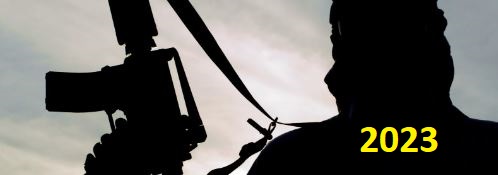Because of terrorism’s core purpose of instilling fear, its characteristics and features are not always foreseeable. When it comes to 2023, however, we should expect it to be the most unpredictable year in recent times. Ideological patchworking and mixing, reciprocal influencing and democratization of the threat: all the major trends that might prevail in the next few months pivot around chaos and unpredictability.
Ideological hodgepodge and reciprocal influencing
In the last few years, attacks have been often characterized by ideological crossover and chaotic patchworks of radical influences.
FBI Director Christopher Wray said recent terrorist events perpetrated by so-called lone actors ascribe to a weird hodgepodge that often replace the consistent, deep loyalty to doctrinal principles and worldviews.
Counterterrorism actors will have to unpack what are often incoherent belief systems, combined with both collective and personal grievances.
A few months ago, in Minneapolis, a member of Boogaloo Bois was sentenced to prison for conspiring to provide material support to Hamas, a designated foreign terrorist organization in the U.S.
The boogaloo movement, whose adherents are often referred to as boogaloo boys or boogaloo bois, is a loosely organized far-right anti-government extremist movement in the United States. Its supporters aim at a second American Civil War or second American Revolution, called “the boogaloo” or “the boog.”
Interestingly enough, in an ideological mishmash that is often reflected by discourse, narratives, and tropes, the defendant and some other individuals were members of a sub-group called the “Boojahideen.”
The reciprocal influencing that we will be witnessing in the next few months may also shift back and forth between domestic and international terrorism. The al-Qaeda in the Arabian Peninsula Inspire “Praise & Guide” series reviewed attacks such as the 2021 Boulder supermarket mass shooting to assess what was done well by the attacker and what could have been done better to increase the action’s lethality and impact.
Online, accelerationists are distributing ISIS videos because they cherish the tactical advice and the jihadists’ passion and ruthlessness, while jihadists laude the lone-wolf nature and execution of school shooters.
Democratization of the threat
An individual with an internet connection, a smartphone, and access to weapons, including “ghost guns” – unserialized and untraceable firearms that can be bought online and assembled at home – can now take action.
A few days ago, six people were injured in an attack at Paris’ Gare Du Nord train station. The attacker, apparently motivated by the jihadi cause, had made the weapon himself.
This trend is not new, and the echo of former IS spokesman Abu Mohammad al-Adnany’s voice is still here: “If you are not able to find an IED or a bullet, then single out the disbelieving American, Frenchman, or any of their allies. Smash his head with a rock, or slaughter him with a knife, or run him over with your car, or throw him down from a high place, or choke him, or poison him.”
Now, however, the democratization of the threat is likely to intensify thanks to the increased ease of communication, reciprocal influencing, copy-cat mechanisms, and the dynamics characterizing the shared space that has been effectively termed Terrorgram.
Online and offline, radicals from different ideological backgrounds seem to aspire to a sort of contemporary muruwwa, the pre-Islamic set of manly virtues that today translates into chaotic doctrinal hodgepodges, the celebration of actual perpetrators, and cross-fertilization between ideologies.
Terror is evolving, and the fact that this is happening during a conflict such as the one between Russia and Ukraine – which is now the undisputed focus of attention – risks to further jeopardize the effort to rethink terrorism and counterterrorism.
The increased unpredictability that will characterize the threat does not mean that countering efforts will be useless.
On the contrary, we will need to deal with the apparent contradiction embodied by terrorism as an institutionalized actor in conflicts on the one side, and everyday extremists on the other. This will imply reconsidering the very basic notion of terrorism and the need to keep pace with the multiple ways in which individuals, narratives, and strategies from different ideological backgrounds interact with each other both tangibly and symbolically.

